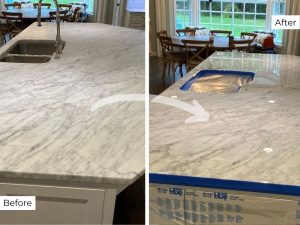Delving into the craft of stone restoration can feel akin to becoming a time traveler. You’re stepping back, encountering surfaces and objects that have borne witness to the elements, decades or even centuries of history etched into their very structure.

First, let’s tackle the elephant in the room – why even bother with stone restoration? Why not just replace old, weary stone with spanking new material? Well, imagine telling stories without characters; restoration involves retaining character, preserving stories, and ensuring the longevity of both aesthetic and structural integrity of buildings and artifacts.
Stone restoration serves an array of environments – from the grandiose facades of ancient buildings to the intimate corners of a suburban fireplace. In each case, the approach adopted is as varied as the stones themselves. You wouldn’t talk to a toddler the same way you would a grown adult, right? Similarly, the type of stone – be it limestone, granite, or marble – dictates the specific treatments applied during the restoration process.
So, how does one get started? First, you must evaluate the damage. Simple observation won’t cut it; professionals often engage in what could be termed ‘stone detective work’. This unearthing process involves understanding the root causes of deterioration – weather elements, pollution, inappropriate previous interventions, or simply the merciless march of time.
Next, comes the cleaning stage. ‘Gentle’ is the keyword here. It’s like coaxing a shy animal out of hiding rather than charging forward with guns blazing. Gentle cleaning helps retain the stone’s integrity. Techniques can vary from the meticulously soft brush strokes to the controlled, precise use of laser technology, depending on the stone’s condition and historical value.
Now, imagine you come across cracks and crevices – the stone’s battle scars from having withstood the test of time. Filling these scars requires a concoction that’s akin to a magic potion. It’s not just any mortar mix, but one that harmonizes with the original material in composition, color, and thermal characteristics – think of it as creating a discreet band-aid, invisible yet effective.
Furthermore, color matching is akin to mixing a cocktail with the perfect balance of spirits and mixers. The aim? To blend the new with the old seamlessly. Here’s where the artistry in stone restoration truly shines – achieving a match that deceives even the sharpest of eyes.
Of course, this all sounds very hands-on and crafty, but technology also plays a pivotal role. Innovations such as 3D scanning and digital mapping offer a way of planning restorations with precision previously unimagined, allowing restorers to anticipate problems before they even arise and plan their interventions with enhanced efficacy.
Despite these advances, the risks of stone restoration are many – one wrong move, and centuries of history could be compromised. That’s why this line of work isn’t just a job; it’s a vocation. It requires a fusion of respect, knowledge, and patience. Picture it as performing surgery; only your patient is a priceless piece of cultural heritage.
But let’s not paint this picture with only brushes of solemnity. Stone restoration also involves moments of unprecedented joy – uncovering original hues hidden under centuries of grime, or restoring strength to a structure that seemed destined to crumble. It’s these moments that make all the challenges worthwhile.